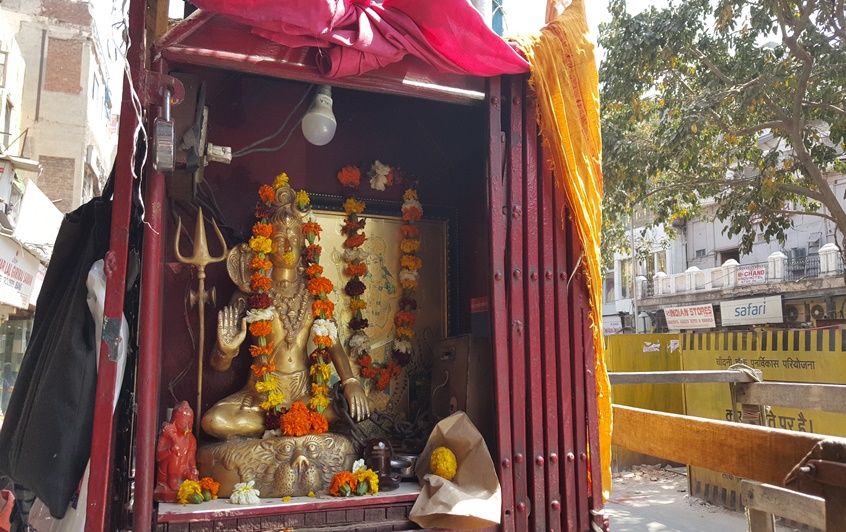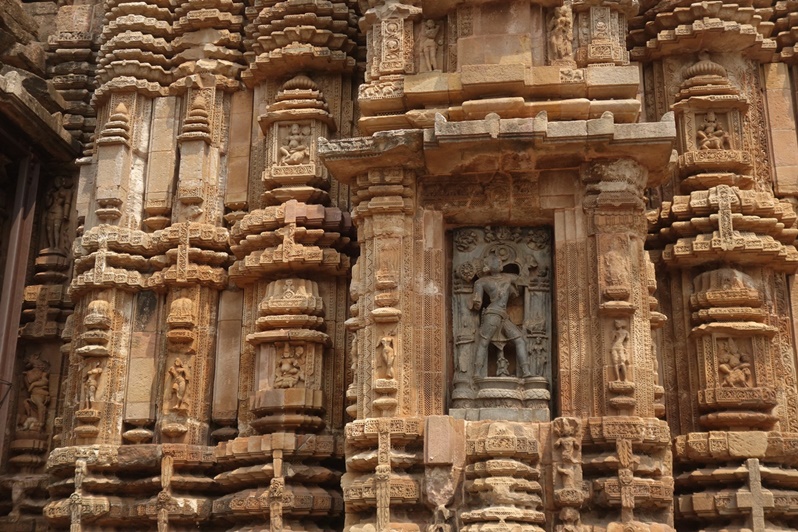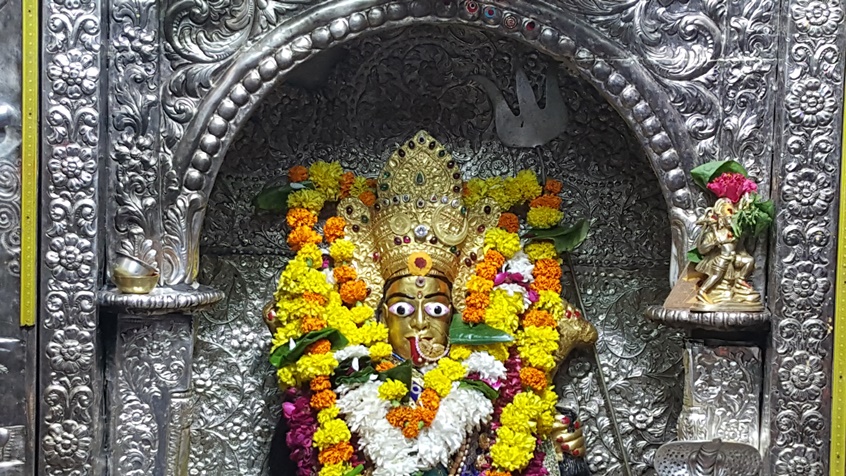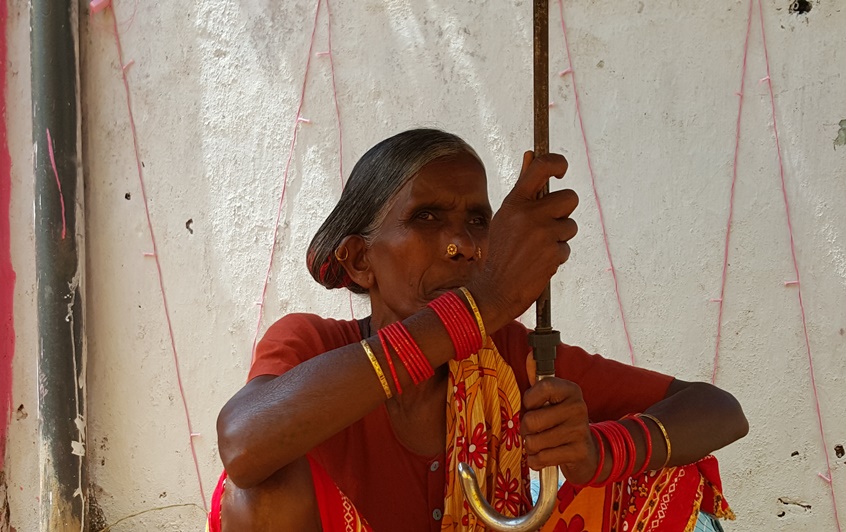
par Bertrand Bellaize, le 13 avril 2020
Les mudras : signification dans les statues Indiennes et Bouddhistes
Les Mudras ou gestes impliquent l’ensemble du bras : coude, main et doigts dans l’art statuaire Hindou et Bouddhiste.
Les postures donnent au premier abord une indication très puissante sur la signification d’une statue Indienne : dès le premier regard on sait, lorsque l’on connaît le langage transmis par les sages dans l’art sacré hindou, le sens métaphysique de la posture prise par la ou les divinités : apaisante, bienveillante, combative, intériorisée….
Mudras signifie « sceau » ou « signe »
La gestuelle des mains va nous donner d’autres indications précieuses et contribuer à approfondir l’enseignement donné. Ces gestes sont d’autant plus important que les divinités peuvent posséder jusqu’à 10 bras !
Il est donc parfois difficile, à la fois de décoder chaque geste mais aussi de comprendre la signification d’ensemble.
Le Yoga des mains
En sanscrit, Mudras peut venir de Mud signifiant la joie et « ra » déclencher ou bien de mud, félicité et dhra, la dissolution.
Les mudras sont très nombreux, ils font partie de la pratique quotidienne de certains Yogis (dans les postures de yoga, ou spécifiquement dans le yoga des mains ou des doigts, en méditation), on les retrouve bien entendu dans la danse classique indienne et je ne vous propose ici que la signification des plus fondamentaux et des plus rencontrés dans les sculptures (il en existe plus de 50). Il est d’ailleurs intéressant de noter que ces gestes se retrouvent dans de nombreuses cultures et religions (voir certaines icônes, postures de statues égyptiennes…) qui les ont utilisés depuis des millénaires.
Les cinq doigts de la main, dans la tradition hindoue représentent les cinq éléments de la terre :
- le pouce : le feu (Agni)
- l’index : l’air (Vayu)
- le majeur : l’ether, le ciel (Akash)
- l’annulaire : la terre (Prithivi)
- l’auriculaire : l’eau (Jala)
Les mudras exécutés par les divinités nous proposent donc à la fois un message spirituel mais sont aussi une invitation à une pratique yogique.
Les principaux Mudras
Abhaya mudra : sans doute un des plus connus, la main se présente paume devant, doigts vers le haut : c’est le geste de protection, d’absence de peur. L’existence nous offre bien des occasions de connaître la peur et lors d’une Sadhâna, un chemin spirituel, tout chercheur aura à affronter de nombreuses peurs intérieures : ce geste est là pour rappeler à tous que la divinité est présente et nous protège.
Atmanjali mudra littéralement révérence au Soi paume des mains jointes devant la poitrine, c’est un geste de vénération, de salutation intérieure : les deux aspects qui sont toujours à l’oeuvre dans le monde de la forme (ying et yang, concave/convexe, jour/nuit, gauche/droite….) sont réunifiés dans ce geste pour ne former qu’un, synonyme d’absolu.
S’il les paumes sont placées au niveau du front, c’est une salutation simple à autrui (namaskar).
Jnana mudra littéralement la connaissance : paume vers le haut à l’horizontale, pouce et index joint : union du Soi (l’Absolu :le pouce) et du soi (l’absolu incarné en chacun de nous : l’index). Symbole fort de la sagesse de la divinité.
Prana mudra littéralement énergie : l’annulaire et l’auriculaire touchent le pouce tandis que l’index et le majeur sont tendus. C’est un mudra dynamisant.
Tarjani mudra main relevée, index pointant vers le ciel : attitude qui demande de la vigilance, une plus grande attention et attribuée à certaine divinité qui garde un sanctuaire signifiant ainsi aux fidèles le respect. Dans certaines conditions, lorsque que les divinités prennent un aspect terrible, c’est un geste de menace, un rappel à l’ordre pour certains fidèles.
Varada mudra paume ouverte, dirigée vers le bas : c’est le mudra de l’offrande, du don, de la bénédiction. Indique que la divinité donne sans compter, tout est à disposition.
Dyana mudra ou samadhi mudra les deux mains, coudes posés sur les genoux, reposent l’une sur l’autre, paume vers le ciel. Attitude de recueillement total, méditation profonde (en général associé à la posture de Padmâsana).
Vitarka mudra paume vers l’interlocuteur, le pouce et l’index se rejoignent et forment un cercle : c’est la divinité dans son rôle d’enseignant, de maître à disciple ; le geste symbolise l’argumentation, de l’explication de la loi, la sagesse.
La posture, les mudras de la divinité hindoue ou bouddhiste nous apportent déjà de nombreux éléments pour comprendre le message sacré transmis au travers de la statue mais la transmission se fait aussi au travers d’autres signes tels les attributs, les montures...
Sources
The Book of Hindu Imagery: Gods, Manifestations and Their Meaning : Eva Rudy Janssen
Un et multiple : Sarah Combe
Mythes et dieux de l’Inde : Alain Danielou
Petite Encyclopédie des Divinités et Symboles du Bouddhisme Tibétain, Tcheuky Sèngué
Mudras, L’art de la gestuelle spirituelle, Ingrid Ramm-Bonwitt


